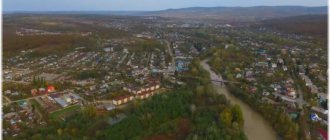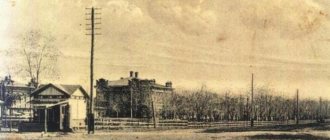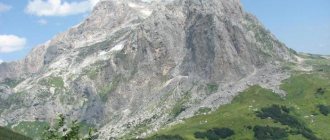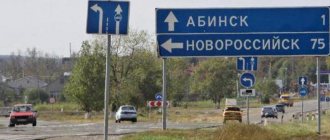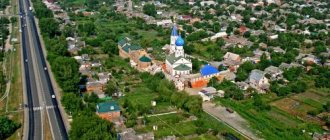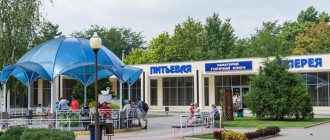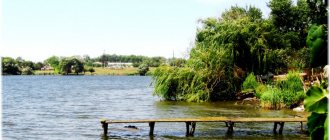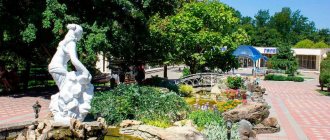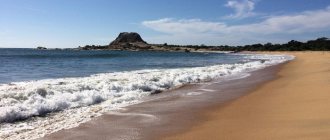Gulkevichi is a small town in the Krasnodar region. It is separated from Krasnodar by 160 km. It got its name from the family that many years ago owned these lands, faithfully served the king. The head of the Gulkevichi family worked in court and was awarded orders many times. After the end of the Kazan War, Emperor Alexander II decided to reward his loyal subject with 3 thousand acres of land. It is noteworthy that the emperor’s subject had never been to the Krasnodar region before. He rented out the lands he received as a gift to tenants, and he lived in St. Petersburg.
In 1864, the Rostov-Vladikavkaz railway was built in the Krasnodar region. The station, which was located on lands owned by Gulkevich, received the name of the surname of the owner of this territory. Later, these places were inhabited, and a settlement arose, which received the status of a city. The provincial town of Gulkevichi appeared in 1961. As of 2021, 34 thousand people live here. Moreover, this figure does not change much, either up or down; there are fluctuations, but they are insignificant. The territory of the city is crossed by the Samoilova River, its length is approximately 38 km. It resembles a chain of lakes, in some places it looks like a stream, and in others it spreads widely. The river has numerous quiet backwaters where locals enjoy fishing.
Geography[edit]
Area of 1395 sq. km. located in the northeast of the Krasnodar Territory and borders the Stavropol Territory. The climate is continental with hot summers and mild winters.
The landscape is rich in steppes, forests, and ponds. The main river of the Krasnodar Territory, the Kuban, 142 km long, flows through the territory. And also the rivers Samoilova Balka, Sinyukha, Zelenchuk. Along the coast of Kuban there are fishing and hunting grounds and recreation areas.
Population 100,900 people, more than 50 nationalities.
There are 63 settlements in the region: 1 city, 1 village, 61 farms and villages.
The transport network is well developed: in addition to three railway stations, the region is crossed by the federal highway Rostov-on-Don - Baku.
Gulkevichi
(Krasnodar region)
OKATO code:
Founded: Urban settlement from: City from: Center:
| Telephone code (reference phone) | |
| 86160***** | 21-6-88 |
Deviation from Moscow time, hours: Geographical latitude: Geographical longitude: Altitude above sea level, meters:
Sunrise and sunset times of the Sun and Moon in the city of Gulkevichi
Gulkevichi: photo from space (Google Maps) Gulkevichi: photo from space (Microsoft Virtual Earth)
| Gulkevichi. Nearest cities. Distances in km. on the map (in brackets along roads) + direction. Using the hyperlink in the distance , you can get the route (information courtesy of the AutoTransInfo website) | |||
| 1 | Giray | 4 (5) | WITH |
| 2 | Krasnoselsky | 7 () | NW |
| 3 | Caucasian | 8 (29) | WITH |
| 4 | Novoukrainskoe | 11 () | Z |
| 5 | Kropotkin | 11 (19) | NW |
| 6 | Temizhbek | 14 () | NE |
| 7 | Kazanskaya | 20 (30) | Z |
| 8 | Grigoropolisskaya (Stavropol Territory) | 29 (32) | IN |
| 9 | Rashevatskaya (Stavropol Territory) | 35 () | NE |
| 10 | Petropavlovskaya | 36 () | SW |
| 11 | Tbilisskaya | 37 (52) | IN |
| 12 | Mikhailovskaya | 41 () | YU |
| 13 | Temirgoevskaya | 41 () | SW |
| 14 | Novokubansk | 41 (45) | SE |
| 15 | Novoaleksandrovsk | 45 (62) | IN |
| 16 | Arkhangelskaya | 46 () | NW |
| 17 | Khakurinokhabl (Republic of Adygea) | 51 () | SW |
| 18 | Armavir | 53 (61) | SE |
| 19 | Koshekhabl (Republic of Adygea) | 53 (95) | YU |
| 20 | Staraya Stanitsa | 54 () | SE |
| 21 | Kurganinsk | 54 (87) | YU |
| 22 | Ladoga | 58 (76) | Z |
| 23 | Ternovskaya | 58 (86) | WITH |
| 24 | Dondukovskaya (Republic of Adygea) | 59 (114) | SW |
| 25 | Ladovskaya Balka (Stavropol Territory) | 63 () | NE |
| 26 | Solnechnodolsk (Stavropol Territory) | 63 (137) | IN |
| 27 | Novopokrovskaya | 64 (91) | WITH |
| 28 | Novotroitskaya (Stavropol Territory) | 66 () | IN |
| 29 | Rodnikovskaya | 66 (126) | YU |
| 30 | Novomalorossiyskaya | 68 () | NW |
The city is located in the Ciscaucasia, 150 km northeast of Krasnodar.
Territory (sq. km): 74
Historical sketch
It arose as a village at the Gulkevichi station (opened in 1875); name based on the location of the station on lands owned by Councilor N.V. Gulkevich.
In ATD-1945 - the village of Gulkevichi. Since March 24, 1959, the working village of Gulkevichi. City since 07/21/1961
.
Economy
Factories: steel structures, sugar, butter, building materials. Plant for the production of reinforced concrete products.
Gulkevichi is the center of an agricultural region. They grow grains, fruits, and berries. Pig farming, poultry farming.
Main enterprises
ANIMAL HUSBANDRY
CJSC "Plemzavod 'Gulkevichsky'" Offers:
Museums, galleries, exhibition halls
Historical and Local Lore Museum of the Municipal Formation Gulkevichi District
| Population by year (thousands of inhabitants) | |||||||
| 1939 | 8.2 | 1996 | 35.0 | 2007 | 35.0 | 2015 | 34.3 |
| 1959 | 20.3 | 1998 | 35.1 | 2008 | 35.1 | 2016 | 34.3 |
| 1967 | 23 | 2000 | 35.2 | 2010 | 35.0 | 2017 | 34.4 |
| 1970 | 22.1 | 2001 | 35.3 | 2011 | 35.2 | 2018 | 34.2 |
| 1979 | 27.3 | 2003 | 35.1 | 2012 | 34.9 | 2019 | 34.2 |
| 1989 | 31.7 | 2005 | 35.1 | 2013 | 34.6 | 2020 | 34.3 |
| 1992 | 33.3 | 2006 | 35.0 | 2014 | 34.5 |
Literature
- Pospelov E.M.
Geographical names of the world: Toponymic dictionary: About 5000 units. M.: Russian dictionaries, Astrel Publishing House LLC, AST Publishing House LLC, 2001. pp. 127-128 - Ch.
ed. Gorkin A.P. Geography of Russia: encyclopedic dictionary. M.: Great Russian Encyclopedia, 1998. p. 150 - Ch.
ed. Lappo G.M. Cities of Russia: encyclopedia. M.: Great Russian Encyclopedia, 1994. p. 113
Symbolism[edit]
The coat of arms was adopted on February 26, 2006. On a golden field at the top there is an azure caduceus above two crossed crimson hammers, at the bottom there is a silver point; some of the bars that make it up are painted dark red; above the tip there is a wide azure border with 15 silver stars, the top star is the largest.
Hammers are a symbol of the railway. The caduceus is a symbol of trade, which strengthened here in the 19th century. The azure border is a bend of the Kuban River flowing throughout the region. The golden color of the field is the generosity of Kuban nature. Silver wall with dark red bars - construction organizations, brick factories. Stars are urban and rural settlements of the region.
The flag was adopted on February 26, 2006, developed on the basis of the coat of arms. A rectangular panel of yellow color with a blue caduceus above crossed red hammers. On the right is a triangle in the form of vertical white and red masonry, bordered by a blue stripe with 15 white stars.
Head of the Gulkevichi district - Shishikin Alexander Alexandrovich, born June 1, 1985. Holds the post since September 12, 2021.
Population
| Population | |||||||||
| 1926 | 1939 | 1959 | 1967 | 1970 | 1979 | 1989 | 1992 | 1996 | 1998 |
| 6239 | 8247 | 20 280 | 23 000 | 22 052 | 27 290 | 31 668 | 33 300 | 35 000 | 35 100 |
| 2000 | 2001 | 2002 | 2003 | 2005 | 2006 | 2007 | 2008 | 2009 | 2010 |
| 35 200 | 35 300 | 35 141 | 35 100 | →35 100 | 35 000 | →35 000 | 35 100 | 34 953 | 35 244 |
| 2011 | 2012 | 2013 | 2014 | 2015 | 2016 | 2017 | 2018 | 2019 | 2020 |
| 35 200 | 34 933 | 34 645 | 34 479 | 34 347 | 34 289 | 34 360 | 34 236 | 34 215 | 34 272 |
As of January 1, 2021, in terms of population, the city was in 452nd place out of 1,115 cities in the Russian Federation.
National composition
According to the 2010 All-Russian Population Census:
| People | Number of people, people | Share of the total population, % |
| Russians | 32 701 | 92,78 % |
| Armenians | 755 | 2,14 % |
| Ukrainians | 584 | 1,66 % |
| Germans | 287 | 0,81 % |
| other | 681 | 1,93 % |
| nationality not specified | 236 | 0,67 % |
| Total | 35 244 | 100,0 % |
History[edit]
The history of the city of Gulkevichi dates back to July 15, 1875, when traffic on the Rostov-Vladikavkaz railway opened and a station named after state official N.V. appeared at the 249th verst from Rostov. Gulkevich, owner of the land. During the Caucasian War N.V. Gulkevich was engaged in supplying the Russian army and was awarded Kuban lands.
The Gulkevichsky district was formed on December 31, 1934 as a result of the separation of the Azov-Black Sea Territory from the Kropotkinsky district.
Since September 13, 1937, it has been part of the Krasnodar Territory.
During the Great Patriotic War, the national economy in the region was rebuilt on a war footing. The Gulkevichi Cossack Hundred was formed and took part in the battles near the village of Kushchevskaya. A fifth of the population went to the front. Together with the troops of the Soviet Army, the Gulkevichi region was liberated from the invaders by the writer K. M. Simonov, who received the title of honorary citizen.
On February 1, 1963, it was abolished and became part of the Caucasus region with its center in the city of Gulkevichi, and on October 20, 1980, the Gulkevichi district was restored.
City of sports and healthy lifestyle
Local residents try to lead a healthy lifestyle, and the city administration actively supports sports. Freestyle wrestling is well developed in Gulkevichi, a lot of medals have already been won. Training takes place at the Zvezdny sports complex. Sports have been developing here for 46 years. The city has produced many Russian, European and even world champions. It is quite quiet and even, one might say, provincial, but this gives it a special charm. On its territory there are multi-storey buildings, despite their presence, it resembles a large village.
Industry[edit]
Gulkevichi district is one of the leading industrial and agricultural districts in the region with a diversified economy. Historically, the wealth of deposits of non-metallic minerals, convenient geographical location and communication routes influenced the development of the production of building materials, sand-lime bricks, and reinforced concrete products. On the territory of the district, economic and business activities are carried out by enterprises producing:
- precast concrete;
- wall materials;
- steel metal structures;
- brick;
- non-metallic construction materials;
- joinery;
- furniture;
- wooden windows and doors;
- paving slabs.
About the analysis method
Above is a comparative analysis of the financial position and performance of the organization. The official accounting statements of organizations of the Russian Federation for 2021, presented in the Federal Tax Service database (2 million organizations), were taken as a basis for comparison. The comparison is made using 9 key financial ratios (see table above). A comparison of an organization's financial ratios is made with the median value of indicators of all organizations in the Russian Federation and organizations within the industry, as well as with quartiles of these values. Depending on whether each value falls into the quartile, a score from -2 to +2 is assigned (-2 – 1st quartile, -1 – 2nd quartile, +1 – 3rd quartile; +2 – 4th quartile; 0 – the value deviates from the median by no more than 5% of the difference between the median and the quartile in which the indicator value falls). To form a conclusion based on the analysis results, the scores are summarized with equal weight for each indicator, resulting in a score from -2 to +2:
| much better (+1 - +2on) |
| better (from 0.11 to +1on) |
| roughly equivalent (from -0.11on to +0.11on) |
| worse (from -1on to -0.11) |
| much worse (from -2on to -1) |
The year-over-year change is calculated by comparing the overall industry financial health score for the current year with the score for the previous year. The result of the comparison could be as follows:
| significantly improved (a positive change of more than 1 point). |
| improved (positive change less than 1 point); |
| did not change (the score did not change or changed slightly, no more than 0.11); |
| worsened (deterioration over the year by less than 1 point); |
| significantly worsened (deterioration over the year by more than 1 point); |
About errors: The accounting data presented in the database of the statistical agency may contain technical errors. To reconcile the data, see the financial statements of Gulkevichsky Starch Plant LLC according to the Federal Tax Service.
Need an official report? If you require a written opinion on the results of a comparative analysis, write to us, we will prepare a detailed report from an audit firm (the service is provided by certified auditors on a paid basis).
Attention: The presented analysis does not indicate the poor or good financial condition of the organization, but characterizes it relative to other Russian enterprises. For detailed financial analysis, use the “Your Financial Analyst” program - upload data to the program >>
Agriculture[edit]
The basis of the agricultural sector of the region’s economy is large diversified farms, 3 of which are included in the Agro-300 club, consisting of the 300 best farms in Russia. Agricultural enterprises of the region supply:
- compound feed;
- starch, molasses;
- granulated sugar;
- dairy products;
- grains, sunflowers, sugar beets, legumes;
- flour;
- bread and bakery products;
- vegetables, fruits, berries;
- meat, poultry, eggs.
Economic activities are carried out by peasant farmers and personal subsidiary plots.
There are the North Caucasus branch of the Sugar Beet Research Institute of the Russian Agricultural Academy and the Kuban Experimental Station of the All-Russian Institute of Plant Growing named after. N. I. Vavilova. A branch of the Kuban Genetic Seed Bank is also located here.
Population
| Population | |||||||||
| 1926 | 1959 | 1967 | 1970 | 1979 | 1989 | 1992 | 1996 | 1998 | 2000 |
| 6239 | 20 280 | 23 000 | 22 052 | 27 290 | 31 668 | 33 300 | 35 000 | 35 100 | 35 200 |
| 2001 | 2002 | 2003 | 2005 | 2006 | 2007 | 2008 | 2009 | 2010 | 2011 |
| 35 300 | 35 141 | 35 100 | →35 100 | 35 000 | →35 000 | 35 100 | 34 953 | 35 244 | 35 200 |
| 2012 | 2013 | 2014 | 2015 | 2016 | 2017 | 2018 | |||
| 34 933 | 34 645 | 34 479 | 34 347 | 34 289 | 34 360 | 34 236 |
As of January 1, 2021, the city ranked 458th out of 1,113 cities in the Russian Federation in terms of population.
National composition
According to the 2010 All-Russian Population Census:
| People | Number of people, people | Share of the total population, % |
| Russians | 32 701 | 92,78 % |
| Armenians | 755 | 2,14 % |
| Ukrainians | 584 | 1,66 % |
| Germans | 287 | 0,81 % |
| other | 681 | 1,93 % |
| nationality not specified | 236 | 0,67 % |
| Total | 35 244 | 100,0 % |
Culture[edit]
The district has a developed network of cultural institutions: clubs, libraries, a music school, art schools, a regional history museum, a city park of culture and recreation. Residents can spend time at the Zodiac leisure center and cinema or the Seven Lakes water park.
Sights - ancient mounds and mound groups, architectural monuments of the early 20th century, monuments to the fallen heroes of the Second World War, the gallery of Heroes of the Soviet Union, the Motherland memorial, the Misnyanko estate, a windmill.
Notes
- ↑ 1 2
Table 2. Population of districts and urban settlements of the constituent entities of the Russian Federation //
Preliminary results of the 2010 All-Russian Population Census: Stat.
Sat./Rosstat. . - Moscow: IRC "Statistics of Russia", 2011. - P. 32 - 86. - ↑
2002 census - ↑ 1 2 Azarenkova A. S., Bondar I. Yu., Vertysheva N. S.
Main administrative and territorial transformations in the Kuban (1793-1985). - Krasnodar: Krasnodar Book Publishing House, 1986. - P. 247. - 395 p.

